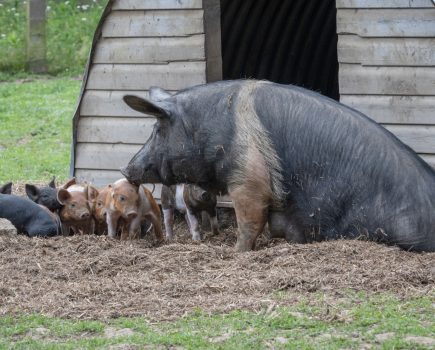Are there alternative protein sources for our chicken food avoiding the use of soya?
Pammy Riggs replies:
This was a frequently asked question at a conference I attended recently. It’s a fact that with our high producing chickens, whether these are egg layers popping out 300 eggs per year or meat birds expected to grow into a hearty family roast in 10-12 weeks, a balanced protein rich diet is necessary to avoid all sort of complications from unhappy hens to serious deformities and cannabilism. To this end most of us are happy to allow the feed companies to do their thing and make us a selection of processed feeds, usually available in pellet form, generally with soya as a significant part of the protein content.
Delegates at the conference were partly concerned about the 95% of GMO soya in circulation, therefore bound to be part of the ration. Others had personal health reasons for avoiding soya at first or second hand. The 5% non GMO soya is used in organic human and animal feeds.
For less productive poultry breeds ranging on quality vegetation, a supplement of mixed grain is sufficient and avoids the soya debate altogether. Alonside various pulses, a potential vegetable protein source is lupin.
Of course, it is a crying shame that our omnivore chickens cannot have access to a protein source derived from UK abattoir waste so often assigned to the incinerator.
I am thinking of beef and lamb waste converted to insect protein via fly/maggot, desiccated and used as a protein source. Why, when we know our birds are happiest and healthiest when munching on found insects and meaty worms, is this ‘not allowed’ in a world of 50% food waste! No soya problems, GMO or not, to overcome either.







